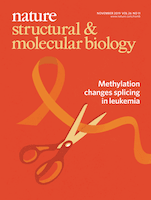
DNA REPAIR
Scope & Guideline
Transforming Discoveries into Solutions for Disease
Introduction
Aims and Scopes
- Mechanisms of DNA Repair:
The journal emphasizes the exploration of various DNA repair mechanisms, including homologous recombination, non-homologous end joining, nucleotide excision repair, and base excision repair. Studies often delve into the molecular details and regulation of these processes. - DNA Damage Response:
Research often focuses on the cellular responses to DNA damage, including signal transduction pathways that activate repair processes and cell cycle checkpoints. Understanding these responses is crucial for elucidating how cells maintain genomic integrity. - Genomic Stability and Cancer:
A significant focus is on how DNA repair mechanisms contribute to genomic stability and their roles in cancer development and therapy. Papers frequently address the implications of DNA repair deficiencies in cancer susceptibility and treatment resistance. - Interactions Between DNA Repair and Other Cellular Processes:
The journal explores the interplay between DNA repair mechanisms and other cellular processes such as transcription, replication, and cellular metabolism, highlighting the multifaceted roles of DNA repair proteins. - Innovative Methodologies:
Research published in the journal often utilizes cutting-edge techniques, including single-molecule imaging, high-throughput sequencing, and biochemical assays, to investigate DNA repair mechanisms at unprecedented resolution.
Trending and Emerging
- Therapeutic Targeting of DNA Repair Pathways:
There is a significant increase in research targeting DNA repair pathways for therapeutic interventions, especially in cancer treatment. Studies are focusing on exploiting DNA repair deficiencies in tumors to enhance the efficacy of chemotherapy and radiotherapy. - Role of DNA Repair in Aging and Neurodegeneration:
Recent publications have increasingly explored the connection between DNA repair mechanisms and age-related diseases, particularly neurodegenerative disorders. This trend underscores the importance of maintaining genomic integrity in aging populations. - DNA Repair and Immune Response:
Emerging research is focusing on the interactions between DNA repair mechanisms and the immune system. Understanding how DNA damage influences immune responses is becoming a critical area of investigation, especially in the context of cancer. - Single-Cell and Single-Molecule Approaches:
Innovative methodologies such as single-cell sequencing and single-molecule imaging are gaining traction, allowing for more detailed investigations of DNA repair processes in living cells and tissues. - Interplay Between Epigenetics and DNA Repair:
There is an increasing recognition of the interplay between epigenetic modifications and DNA repair processes. Research is trending towards understanding how epigenetic factors influence repair efficiency and genomic stability.
Declining or Waning
- Basic Mechanistic Studies:
There appears to be a decline in papers purely focused on basic mechanistic studies of DNA repair proteins without broader implications. As the field evolves, there is a growing emphasis on translational research that connects DNA repair mechanisms to clinical outcomes. - Studies on Bacterial DNA Repair:
Research specifically targeting bacterial DNA repair mechanisms has decreased, possibly due to the increased focus on mammalian systems and their relevance to human health and disease. - Exploratory Research without Clear Applications:
Papers that present exploratory research on DNA repair without clear applications to disease or therapeutic implications are becoming less common, as the field moves towards more applied research that addresses clinical challenges. - Focus on Single Repair Pathways:
There is a waning interest in studies that focus exclusively on single DNA repair pathways. Instead, there is a trend towards integrative approaches that examine multiple pathways and their interactions. - Historical Perspectives on DNA Repair:
Although historical perspectives on DNA repair mechanisms were previously common, there has been a noticeable decline in such reviews as the community seeks more forward-looking research that addresses current challenges in the field.
Similar Journals

MUTATION RESEARCH-FUNDAMENTAL AND MOLECULAR MECHANISMS OF MUTAGENESIS
Bridging Theory and Experiment in Mutation ResearchMUTATION RESEARCH - FUNDAMENTAL AND MOLECULAR MECHANISMS OF MUTAGENESIS is a premier peer-reviewed journal published by Elsevier, dedicated to advancing the understanding of mutagenesis and its broader implications in genetics, health, and molecular biology. With an impressive converged publication history from 1964 to 2024, this journal provides a vital platform for the dissemination of high-quality research findings, contributing significantly to the field's knowledge base. Indexed in Scopus, it holds a Category Quartile ranking of Q3 in Genetics and Q2 in Health, Toxicology, and Mutagenesis, further underscoring its relevance and stature. Access options are available, catering to a diverse audience of researchers, professionals, and students eager to stay informed on the latest developments in mutagenesis research. By bridging experimental studies and theoretical frameworks, the journal plays a crucial role in exploring the fundamental mechanisms underlying genetic mutations and their effects on human health and the environment.

Journal of Stem Cells & Regenerative Medicine
Connecting Knowledge to Practice in Regenerative MedicineThe Journal of Stem Cells & Regenerative Medicine is a leading publication dedicated to the advancing field of stem cell research and regenerative medicine. Established in India and published by JOURNAL STEM CELLS & REGENERATIVE MEDICINE, this Open Access journal has been available since 2007, providing researchers and practitioners with free and unrestricted access to high-quality articles. With an ISSN of 0973-7154, the journal is indexed in Scopus, featuring a wide array of topics and insights into biochemistry, biotechnology, cell biology, and molecular biology, as denoted by its relevant quartile rankings. This journal is committed to bridging the gap between laboratory research and clinical applications, making significant contributions to the scientific community. The convergence of innovative studies from 2010 to 2024 positions it as an invaluable resource for those looking to stay at the forefront of stem cell and regenerative medicine research.

DEVELOPMENTAL DYNAMICS
Advancing the Frontiers of Developmental BiologyDEVELOPMENTAL DYNAMICS is a prominent journal in the field of Developmental Biology, published by WILEY. This esteemed journal, identifiable by its ISSN 1058-8388 and E-ISSN 1097-0177, provides a critical platform for the dissemination of innovative research covering cellular and developmental processes across diverse biological systems. With a 2023 impact factor placing it in the Q2 category of Developmental Biology and an impressive Scopus rank of #39/82, the journal plays a vital role in advancing knowledge and fostering collaboration among researchers, professionals, and students. Although it is not an open-access publication, DEVELOPMENTAL DYNAMICS remains a cornerstone in the academic community, particularly for those dedicated to understanding the complexities of biological development. The journal's convergence from 1992 to 2024 reflects its longstanding commitment to high-impact research that influences both theoretical and practical applications in the field.

NATURE STRUCTURAL & MOLECULAR BIOLOGY
Advancing the Frontiers of Molecular DiscoveryNATURE STRUCTURAL & MOLECULAR BIOLOGY is a leading journal published by NATURE PORTFOLIO, dedicated to advancing the field of molecular and structural biology since its inception in 1998. With an impressive impact factor that places it in the Q1 quartile across both the Molecular Biology and Structural Biology categories, this journal is pivotal for researchers and professionals seeking to publish innovative and high-impact results. Its Scopus ranking further highlights its elite status, with a remarkable 98th percentile for Structural Biology and 95th for Molecular Biology. While the journal does not currently offer open access, it continues to foster a rich discourse among scientists by providing a platform for the dissemination of groundbreaking research. Located in the United Kingdom and operated from Berlin, the journal's commitment to excellence positions it as an indispensable resource for students, researchers, and practitioners in the realms of biochemistry, genetics, and molecular biology.

Cell Adhesion & Migration
Advancing Knowledge in Cell Biology and NeuroscienceCell Adhesion & Migration, published by Taylor & Francis Inc, is a premier open access journal that has been providing a platform for the dissemination of high-quality research since its inception in 2007. With an emphasis on the critical roles that cell adhesion and migration play in various biological processes, this journal endeavors to publish cutting-edge studies in cell biology and cellular and molecular neuroscience. The journal's strong impact is reflected in its classification in the Q2 quartile for both Cell Biology and Cellular and Molecular Neuroscience categories as of 2023, underscoring its significance in advancing knowledge within the scientific community. The journal is accessible globally due to its open access model established in 2019, making it a valuable resource for researchers, professionals, and students aiming to explore innovative findings in cell dynamics and their implications in health and disease. With a commitment to fostering collaboration and dialogue among scientists, Cell Adhesion & Migration continues to be an essential resource in the rapidly evolving fields of cell biology and neuroscience.

INTERNATIONAL JOURNAL OF EXPERIMENTAL PATHOLOGY
Fostering Collaboration in Pathology and Molecular ScienceINTERNATIONAL JOURNAL OF EXPERIMENTAL PATHOLOGY, published by Wiley, is a leading peer-reviewed journal dedicated to the field of experimental pathology. With an ISSN of 0959-9673 and E-ISSN 1365-2613, the journal has been a vital resource for researchers and professionals since its inception in 1990, covering a broad spectrum of topics within pathology, cell biology, and molecular biology. The journal's relevancy is underscored by its Q2 ranking in Pathology and Forensic Medicine and Q3 rankings in both Cell Biology and Molecular Biology, as of 2023, reflecting its significant contribution to the scientific community. Although it does not currently offer open access options, readers can benefit from its insightful research articles and reviews that guide advancements in diagnostic pathology and therapeutic strategies. As the journal continues to evolve, it remains committed to facilitating the exchange of innovative ideas and findings that drive progress in experimental pathology and related fields, making it an indispensable platform for scientists, clinicians, and students alike.

Regenerative Medicine
Connecting Minds for Revolutionary Health SolutionsRegenerative Medicine, published by Taylor & Francis Ltd, is a pivotal journal within the field of biomedical research, focusing on the innovative advances in regenerative and restored functions in human health. With an ISSN of 1746-0751 and an E-ISSN of 1746-076X, this esteemed journal boasts a commendable impact factor within its categories, notably holding the Q2 status in Embryology and Q3 in Biomedical Engineering as of 2023. Covering a broad spectrum of topics from stem cell research to tissue engineering, it serves as a crucial platform for interdisciplinary collaboration among researchers, professionals, and students dedicated to the regeneration of tissues and organs. Given its comprehensive scope from 2006 to 2024, the journal continues to attract high-quality manuscripts that advance the frontiers of knowledge in regenerative medicine. Researchers and practitioners alike are encouraged to engage with the latest findings and methodologies disseminated in this vital publication.

International Journal of Stem Cells
Advancing the Frontiers of Stem Cell ResearchThe International Journal of Stem Cells is a distinguished peer-reviewed journal dedicated to advancing the field of stem cell research. Published by the Korean Society for Stem Cell Research, this journal has established itself as a vital source of high-quality research since its inception in 2008. Operating under the ISSN 2005-3606 and E-ISSN 2005-5447, the journal caters to a global audience, featuring works that span a diverse array of topics within Cell Biology and Developmental Biology. It is noteworthy that as of 2023, the journal is ranked Q3 in Cell Biology and Q2 in Developmental Biology, highlighting its growing influence and credibility in the scientific community. Given its commitment to facilitating open scientific communication, it is crucial for researchers, professionals, and students to engage with the rigorous research published in this journal as it profoundly impacts the understanding and application of stem cell science. With accessibility to a wealth of innovative studies, the International Journal of Stem Cells remains an indispensable resource for anyone interested in the transformative potential of stem cell research.

GENES & DEVELOPMENT
Exploring the Frontiers of Gene Function and DevelopmentGENES & DEVELOPMENT, published by COLD SPRING HARBOR LAB PRESS, stands as a premier journal in the fields of Developmental Biology and Genetics, boasting a remarkable impact factor that reflects its prestigious position in the academic community—ranking Q1 in both disciplines as of 2023. Since its inception in 1987, this journal has been at the forefront of disseminating cutting-edge research, effectively bridging the gap between laboratory breakthroughs and their applications in health and disease. Researchers and professionals rely on GENES & DEVELOPMENT for its rigorous peer-review process and its commitment to promoting innovative studies that unravel the complexities of gene functions and developmental processes. With Scopus rankings placing it in the top percentile among its peers, this journal serves as a vital resource for students and established scientists alike, aspiring to expand their knowledge and contribute to the ever-evolving landscape of genetic and developmental research.

Cold Spring Harbor Perspectives in Biology
Connecting Research with Revolutionary Biological DiscoveriesCold Spring Harbor Perspectives in Biology is a prestigious academic journal published by COLD SPRING HARBOR LAB PRESS that serves as a vital resource in the fields of Biochemistry, Genetics, and Molecular Biology. With an impressive impact factor and categorized in the Q1 quartile for its contributions, this journal is renowned for curating comprehensive reviews that synthesize the latest advancements and ongoing research in these dynamic and interconnected disciplines. Since its inception in 2009, the journal has played a pivotal role in advancing scientific knowledge through high-quality articles that cater to researchers, professionals, and students alike. Although it operates on a traditional subscription model, its contributions are indispensable for those seeking to remain at the forefront of biological research and its myriad applications. With a commendable ranking of #19 out of 221 in general biochemistry, genetics, and molecular biology on Scopus, this journal ensures that its readers have access to cutting-edge insights and a rigorous academic discourse.